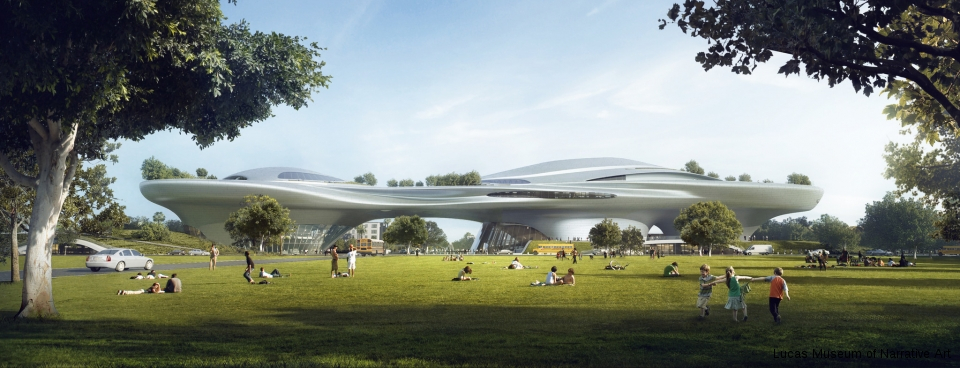Lucas is hoping that the third or the fourth time will be the charm. He’s decided to bundle those efforts together, simultaneously unveiling two different museum designs this week for a pair of California sites.
One proposal is for a location on Treasure Island, in San Francisco Bay. The other is in Exposition Park in Los Angeles, near the Natural History Museum and just west of the Coliseum. Both are fluid, forward-looking designs from the office of 40-year-old Chinese architect Ma Yansong, a rising star who also worked with Lucas on his ill-fated proposal for the Chicago lakefront. ... Both proposals feature the smooth, digitally derived forms for which Ma (who is also designing a mixed-use project on Wilshire Boulevard in Beverly Hills) is well known. Bacigalupi said it was too early to say exactly how much the museum might cost to build in either location. (Including the endowment, the total value of the project is likely to exceed $1 billion.) He also said details of a lease agreement at either spot remained to be hammered out.
The double release of the conceptual designs is just the latest twist in a campaign that has been unorthodox, even scattershot, from the start. When Lucas first went public with plans for a San Francisco museum to hold his collection, which is heavy on Norman Rockwell and Hollywood artifacts and largely disdains modernism, minimalism and abstraction, neither Bacigalupi nor Ma was part of his team. ... If any of Ma’s sculptural, dramatically abstract proposals for the museum — and there have now been three of them, for Los Angeles, Treasure Island and Chicago — were a work of art, there is little chance Lucas would be interested in adding it to his collection. In my experience, when the architecture of a proposed museum is noticeably out of step with the collection it is meant to hold, it’s usually a sign of larger, hidden power struggles or a tangled sense of mission. Or both.
Some of Lucas’ supporters have made the case that the museum’s futuristic gleam is reminiscent of the inventive look of the early “Star Wars” movies. But that seems a stretch, a desire to see a link between Lucas’ youthful Hollywood work and his current architectural thinking that may not actually be there.

